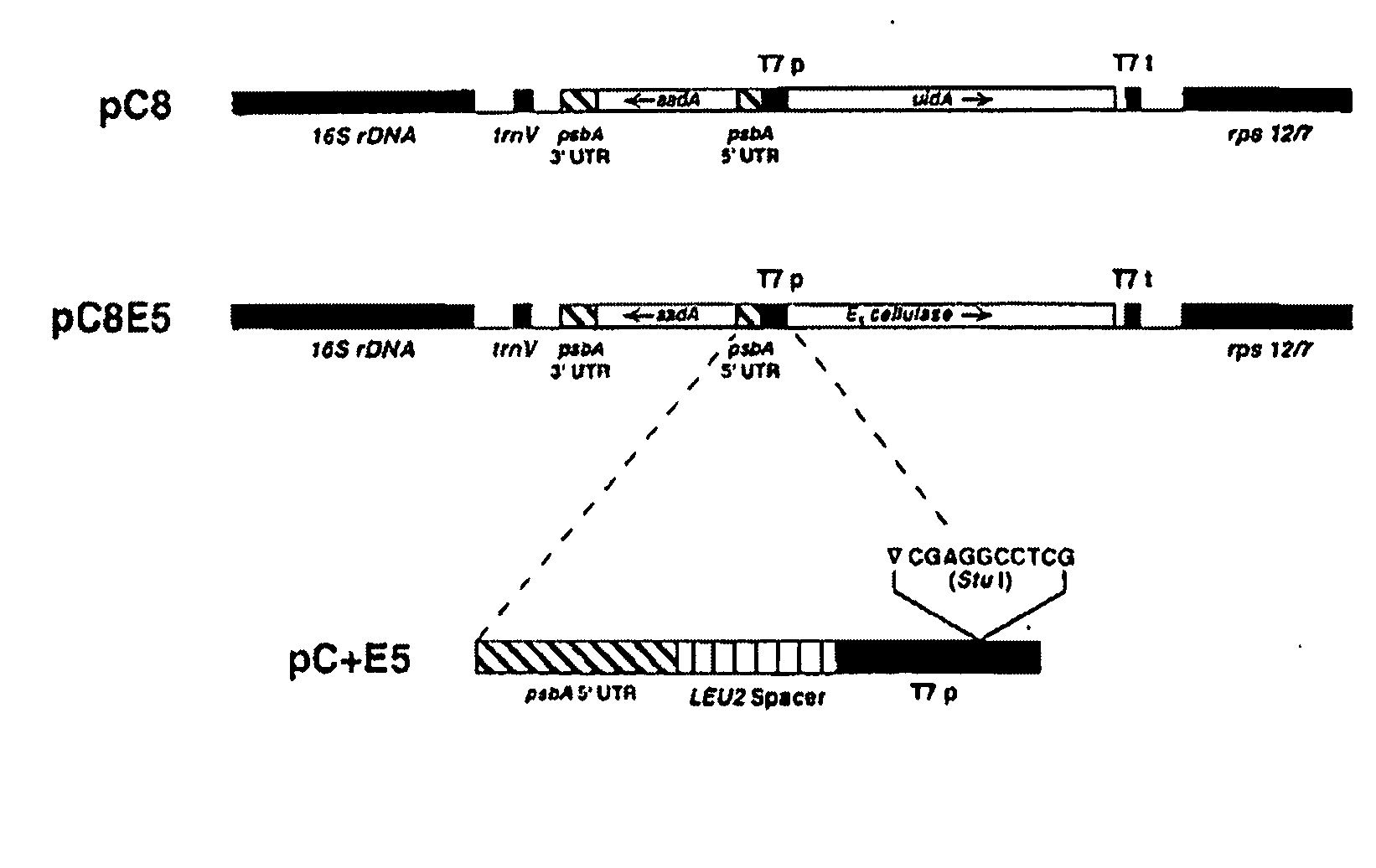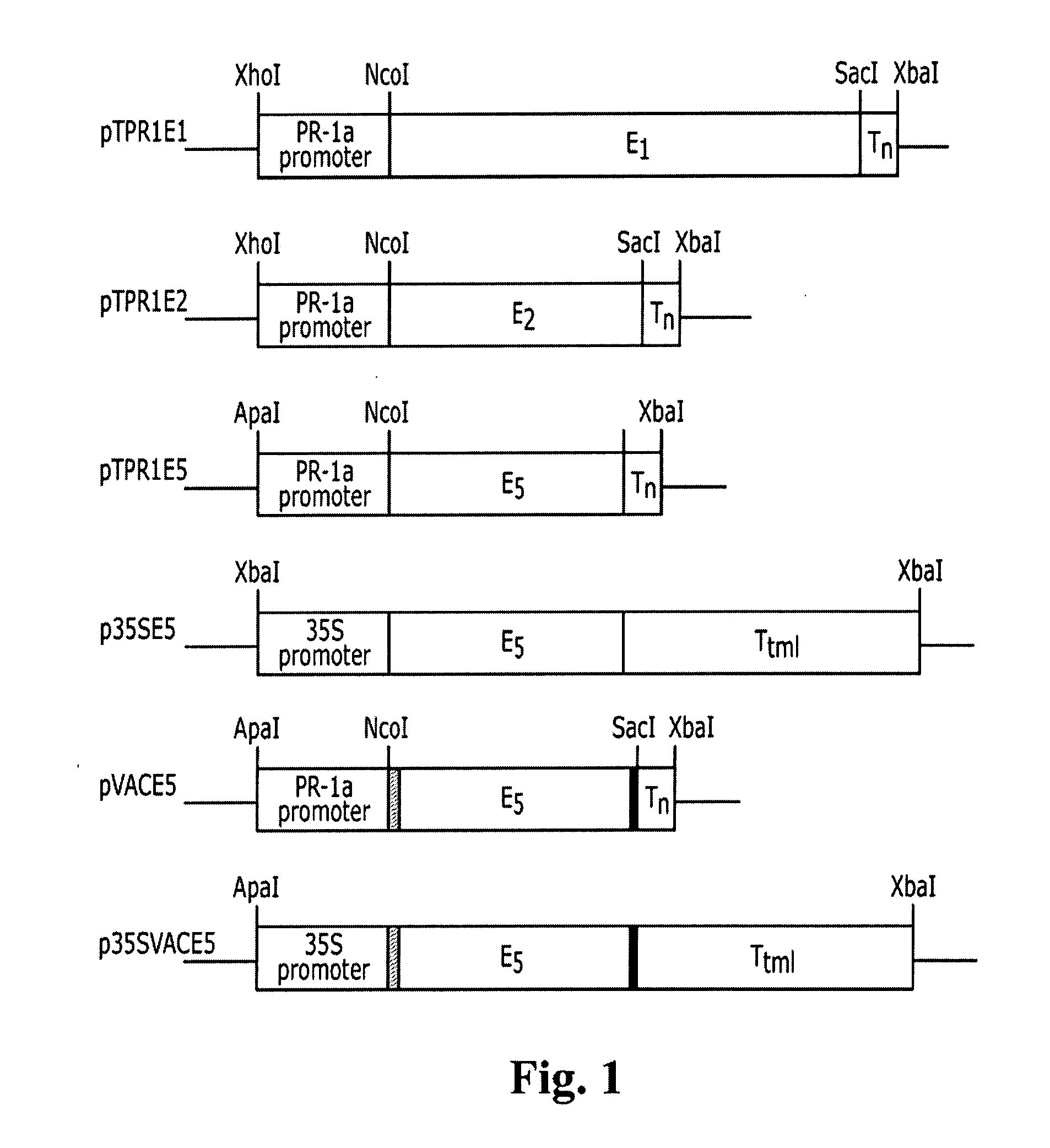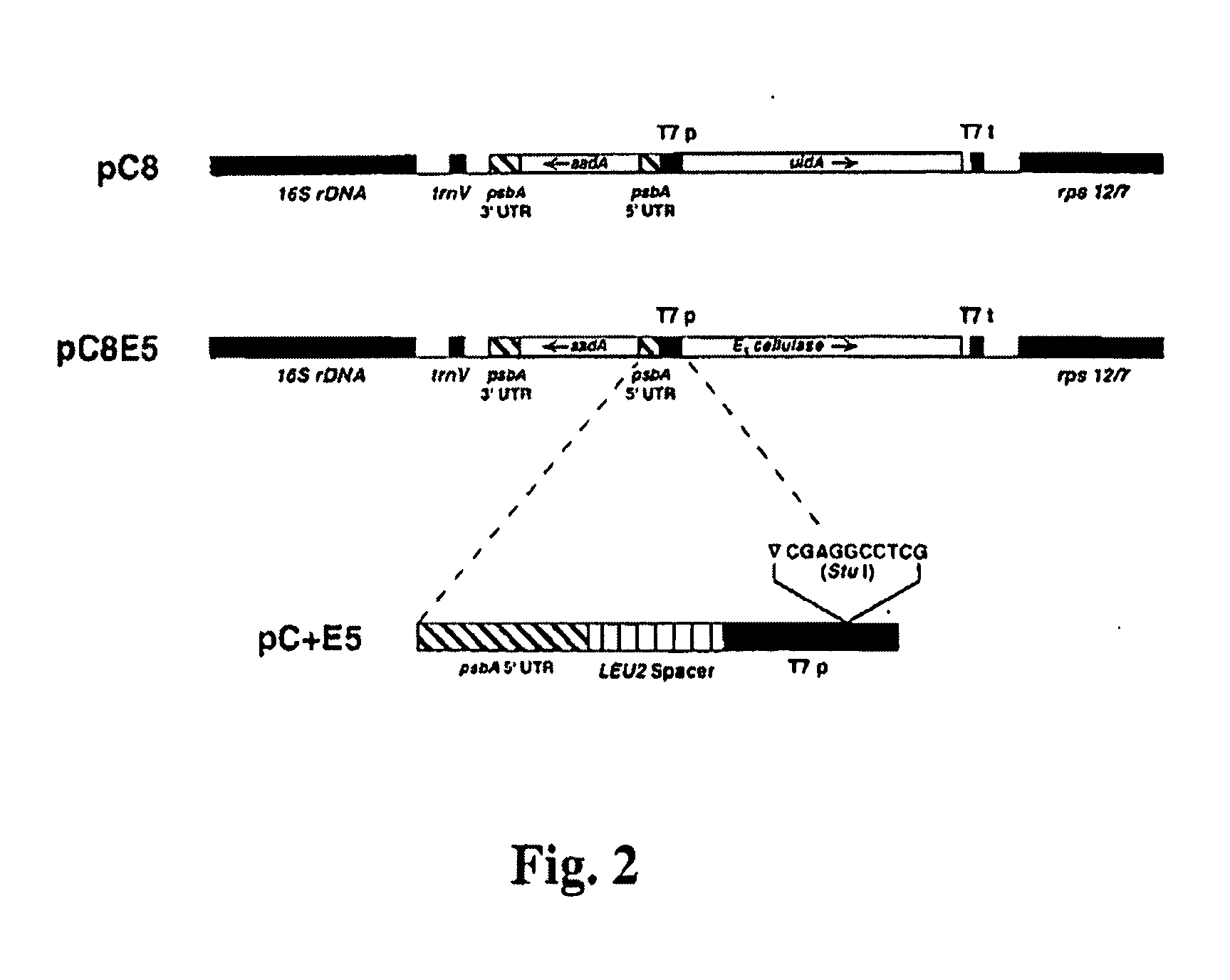Transgenic plants expressing a cellulase
a cellulase and transgenic plant technology, applied in foreign genetic material cells, angiosperms/flowering plants, enzymes, etc., can solve the problems of cellulose degrading enzymes being toxic to plants, harming plants, degrading cellulose, etc., and achieves easy scaling up and high biomass yields
- Summary
- Abstract
- Description
- Claims
- Application Information
AI Technical Summary
Benefits of technology
Problems solved by technology
Method used
Image
Examples
examples
[0134] Standard recombinant DNA and molecular cloning techniques used here are well known in the art and are described by J. Sambrook, E. F. Fritsch and T. Maniatis, Molecular Cloning: A Laboratory manual, Cold Spring Harbor laboratory, Cold Spring Harbor, N.Y. (1989) and by T. J. Silhavy, M. L. Berman, and L. W. Enquist, Experiments with Gene Fusions, Cold Spring Harbor Laboratory, Cold Spring Harbor, N.Y. (1984) and by Ausubel, F. M. et al., Current Protocols in Molecular Biology, pub. by Greene Publishing Assoc. and Wiley-Interscience (1987).
example a1
Preparation of a Chimeric Gene Containing the T. fusca E1 Cellulase Coding Sequence Fused to the Tobacco PR-1a Promoter
[0136] Plasmid pGFE1 (Jung et al. (1993) Appl. Environ. Microbiol. 59, 3032-3043) containing the T. fusca E1 gene (GenBank accession number L20094), which codes for a protein with endoglucanase activity, was used as the template for PCR with a left-to-right “top strand” primer comprising an ATG before the first codon of the mature E1 protein, the first 21 base pairs of the mature protein and a NcoI restriction site at the newly created ATG (primer E11: GCG CCC ATG GAC GAA GTC AAC CAG ATT CGC) (SEQ ID NO:9) and a right-to-left “bottom strand” primer homologous to positions 322 to 346 from the newly created ATG of the E1 gene (primer E12: CCA GTC GAC GTT GGA GGT GAA GAC) (SEQ ID NO:10). This PCR reaction was undertaken with AmpliTaq DNA polymerase according to the manufacturer's recommendations (Perkin Elmer / Roche, Branchburg, N.J.) for five cycles at 94° C. (30 s), ...
example a2
Preparation of a Chimeric Gene Containing the T. fusca E2 Cellulase Coding Sequence Fused to the Tobacco PR-1a Promoter
[0139] Plasmid pJT17 containing the T. fusca E2 gene (Ghangas et al. (1988) Appl. Environ. Microbiol. 54, 2521-2526; Lao et al. (1991) J. Bacteriol. 173, 3397-3407) (GenBank accession number M73321), which codes for a protein with cellobiohydrolase activity, was used as the template for PCR with a left-to-right “top strand” primer comprising an ATG before the last codon of the E2 signal sequence, the first 18 base pairs of the mature protein and a NcoI restriction site at the newly created ATG (primer E21: GCG CGC CAT GGC CAA TGA TTC TCC GTT CTA C) (SEQ ID NO:11) right-to-left “bottom strand” primer homologous to positions 310 to 334 from the newly created ATG of the E2 gene (primer E22: GGG ACG GTT CTT CAG TCC GGC AGC) (SEQ ID NO:12). This PCR reaction was undertaken with AmpliTaq DNA polymerase according to the manufacturer's recommendations for five cycles at 94...
PUM
| Property | Measurement | Unit |
|---|---|---|
| length | aaaaa | aaaaa |
| burst pressure | aaaaa | aaaaa |
| pH | aaaaa | aaaaa |
Abstract
Description
Claims
Application Information
 Login to View More
Login to View More - R&D
- Intellectual Property
- Life Sciences
- Materials
- Tech Scout
- Unparalleled Data Quality
- Higher Quality Content
- 60% Fewer Hallucinations
Browse by: Latest US Patents, China's latest patents, Technical Efficacy Thesaurus, Application Domain, Technology Topic, Popular Technical Reports.
© 2025 PatSnap. All rights reserved.Legal|Privacy policy|Modern Slavery Act Transparency Statement|Sitemap|About US| Contact US: help@patsnap.com



